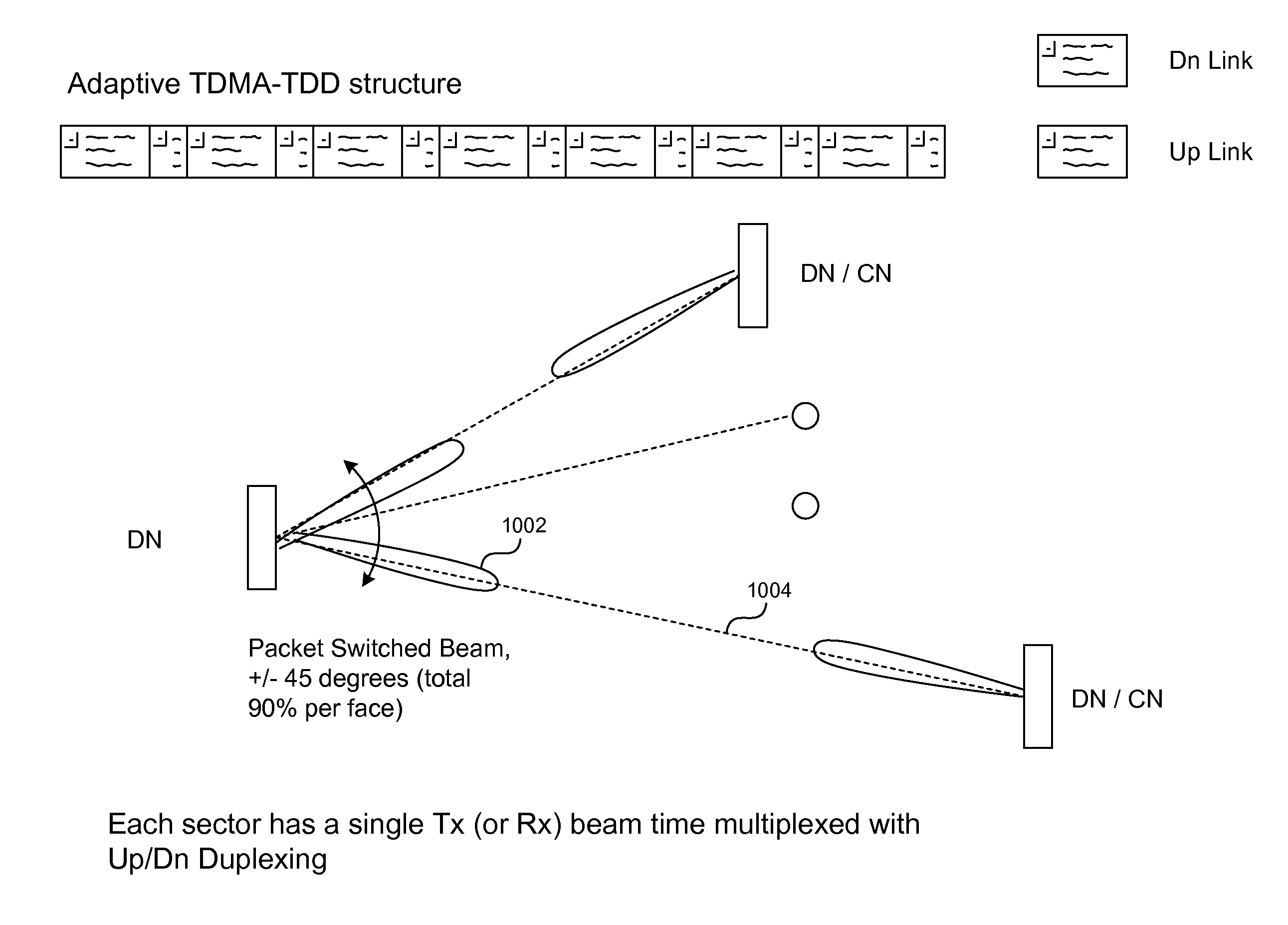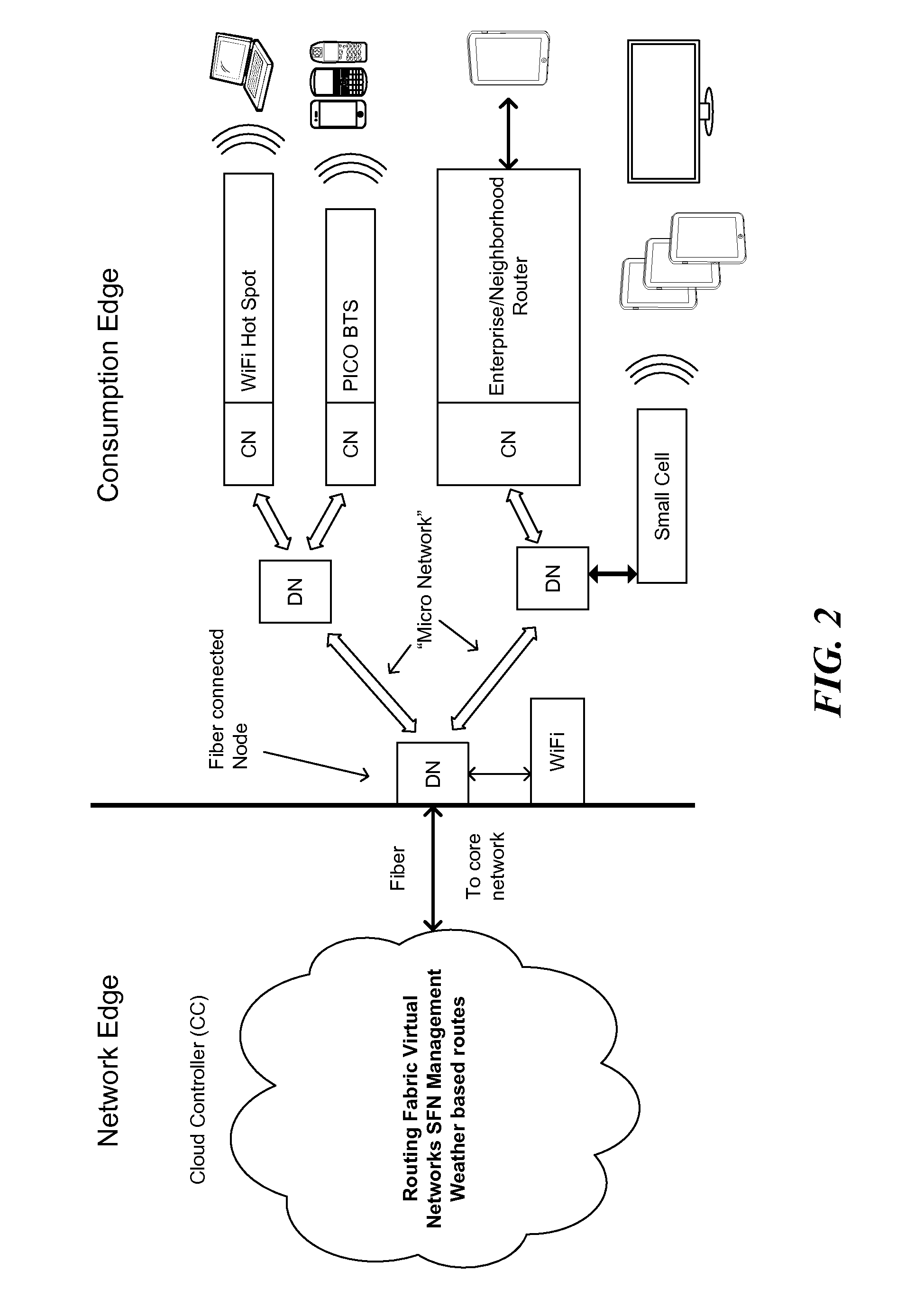Distribution node and client node for next generation data network
a data network and client node technology, applied in the field of wireless communication, can solve the problems of limiting the flexibility of data network architectures in several ways, prohibitively expensive wired data provisioning, and torn streets, so as to maximize network capacity and probability of packet delivery, maximize network capacity and maximize c/(n+i)
- Summary
- Abstract
- Description
- Claims
- Application Information
AI Technical Summary
Benefits of technology
Problems solved by technology
Method used
Image
Examples
Embodiment Construction
[0043]The Next Generation Data Networks topology is shown in FIG. 1. The network (FIG. 2) consists of Distribution Nodes (DNs), Client Nodes (CNs), and a Cloud Controller (CC). The Distribution Nodes (FIG. 3) may connect to a fiber point of presence to get or send data from the “cloud”. The distribution nodes can talk with other distribution nodes and client nodes. The DN has one to four sectors. The Client Nodes have one or two sectors. The Cloud Controller manages routing and network performance analysis. A network may have multiple fiber connected nodes that can be used for redundancy and / or to distribute traffic entry / exit points. These networks can be further split into subnets each associated with a subset of fiber connected nodes (FIG. 4). These subnets are time synchronized to minimize interference and edge effects between the subnets. Frequency channels may also be managed between these subnets to minimize interference between the subnets.
[0044]The Cloud Controller computes...
PUM
 Login to View More
Login to View More Abstract
Description
Claims
Application Information
 Login to View More
Login to View More - R&D
- Intellectual Property
- Life Sciences
- Materials
- Tech Scout
- Unparalleled Data Quality
- Higher Quality Content
- 60% Fewer Hallucinations
Browse by: Latest US Patents, China's latest patents, Technical Efficacy Thesaurus, Application Domain, Technology Topic, Popular Technical Reports.
© 2025 PatSnap. All rights reserved.Legal|Privacy policy|Modern Slavery Act Transparency Statement|Sitemap|About US| Contact US: help@patsnap.com



